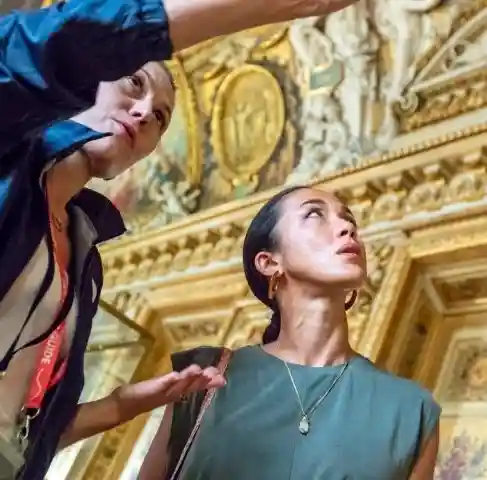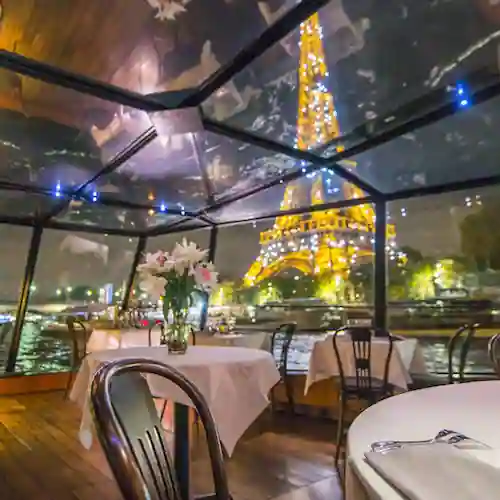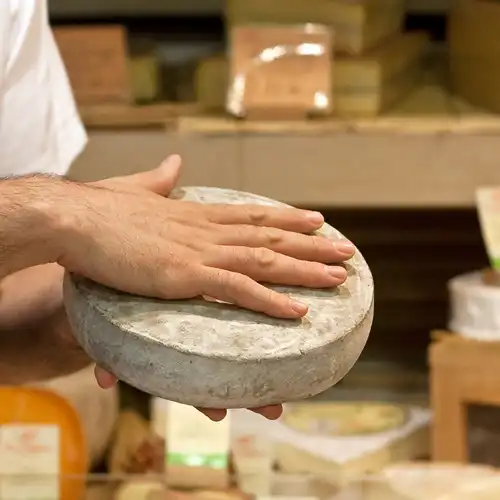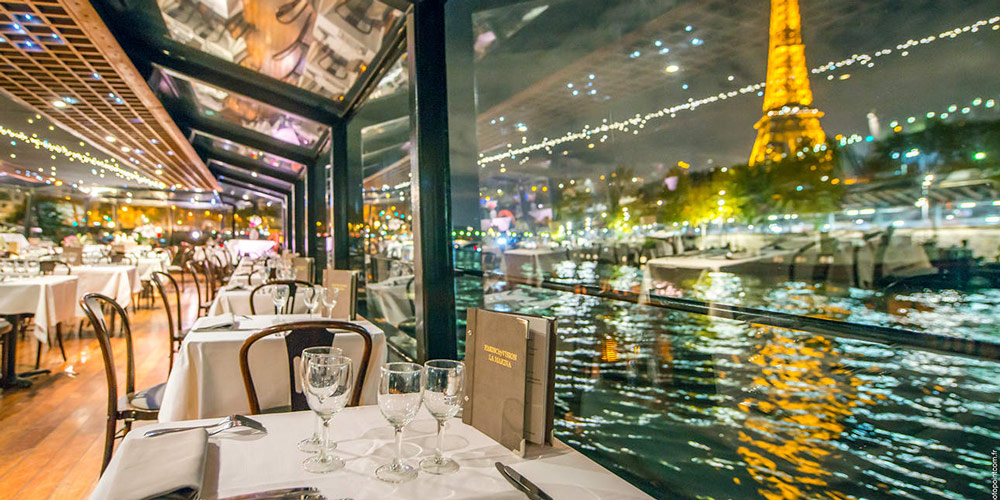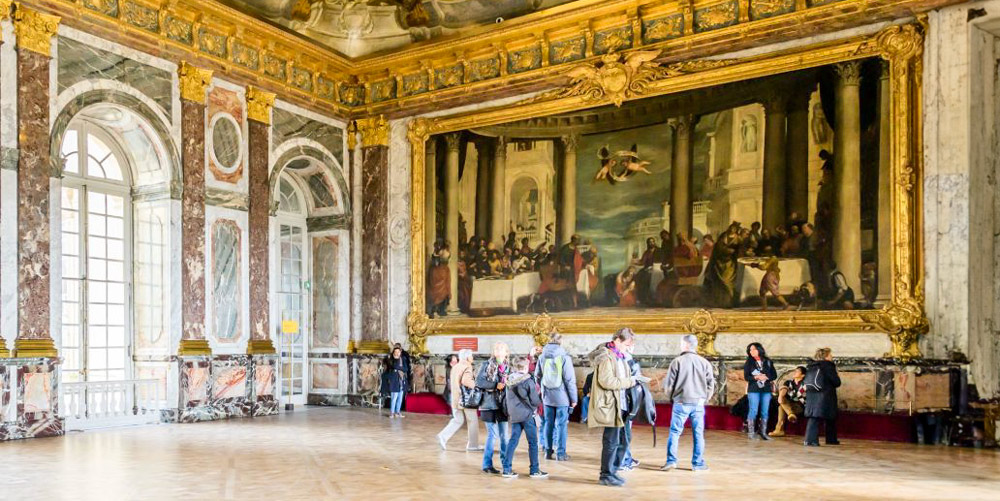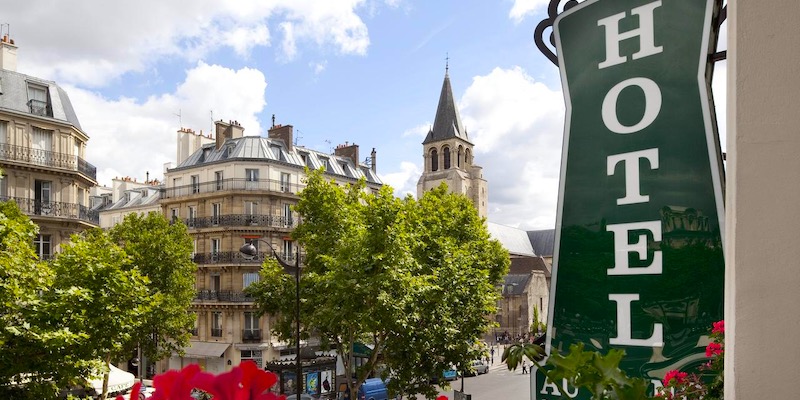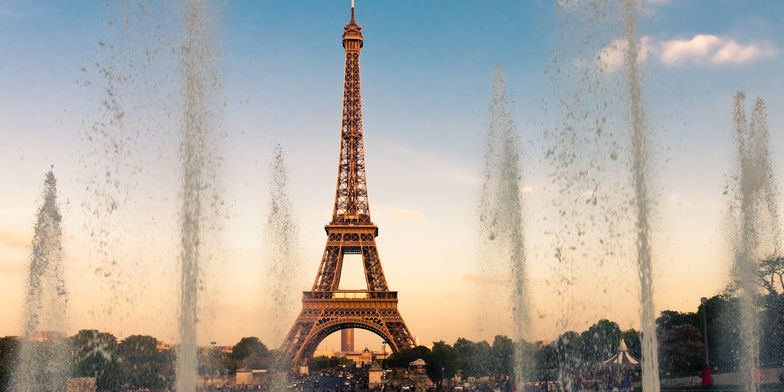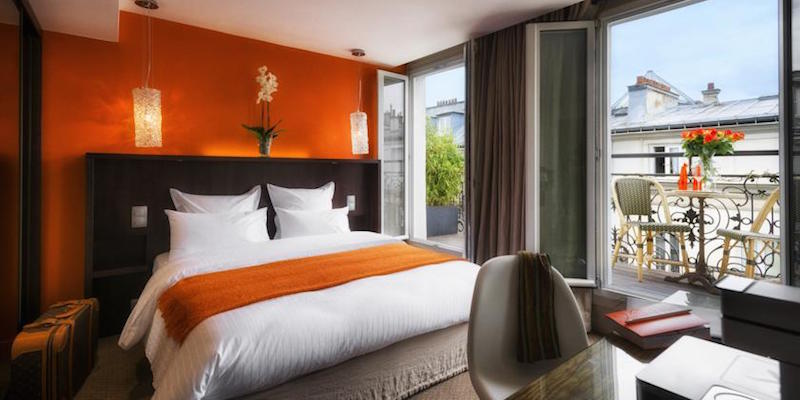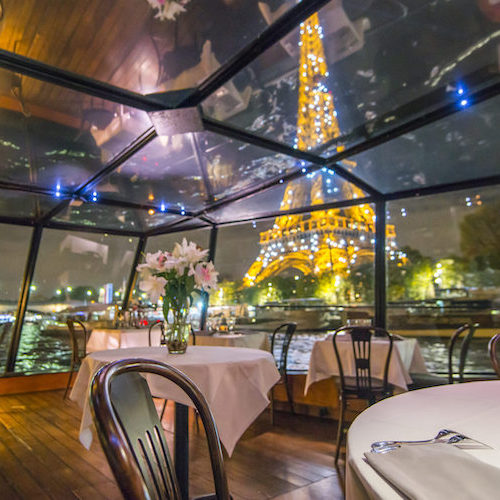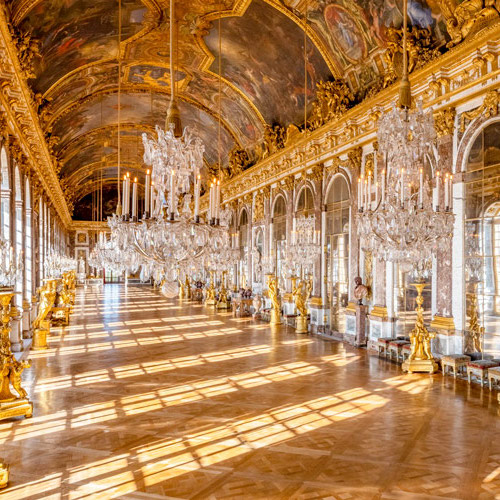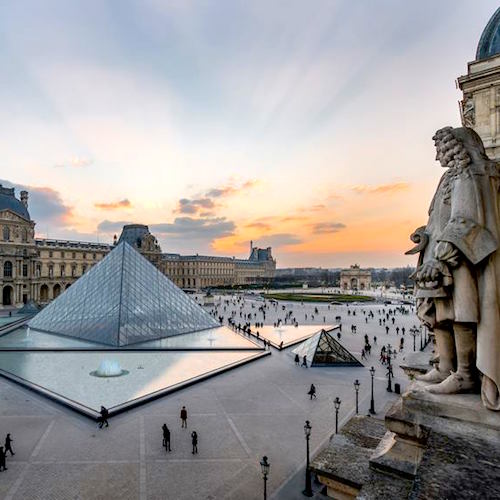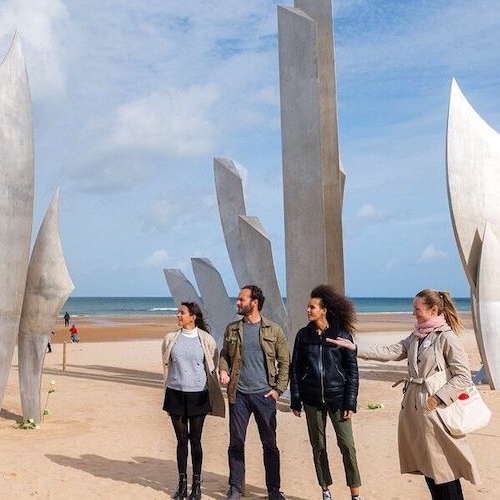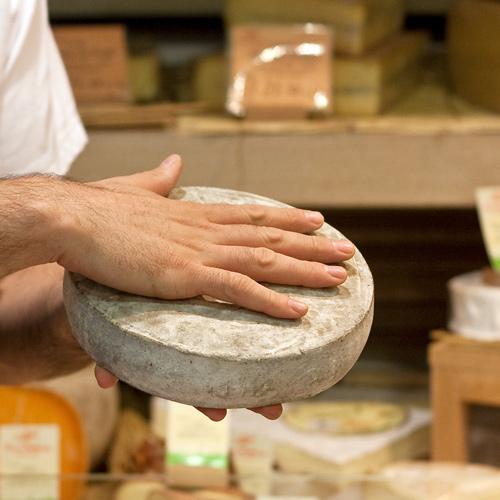Île Saint-Louis Paris – Discover Authentic Paris Behind Notre-Dame
 Buildings of Île Saint-Louis along Quai de Bethune, photo Hotel de Lutece
Buildings of Île Saint-Louis along Quai de Bethune, photo Hotel de Lutece
Floating in the middle of the Seine like a secret in plain sight, Île Saint-Louis Paris is the quieter, more charming twin of Île de la Cité. One bridge away from the crowds at Notre-Dame Cathedral, and suddenly you're in a different city — slower, softer, and more authentic. This is the Paris of 17th-century stone mansions and crooked streets, of riverside picnics, and gossip over tiny cafe tables.
Though only a few blocks wide, Île Saint-Louis Paris manages to pack in a large amount of pleasure — elegant facades, old-world shops, and windows flung open to catch the river breeze. And yes, this is where you'll find Berthillon ice cream — but it's also where you'll find that other Paris: the one you were imagining when you planned your visit.
![]()
Discover What's On When You're Here...
• January... |
• February... |
• March... |
• April... |
• May... |
• June... |
• July... |
• August... |
• September... |
• October... |
• November... |
• December... |
Discover What's On When You're Here
• January...
|
• February... |
• March... |
|---|---|---|
• April... |
• May... |
• June... |
• July... |
• August... |
• September... |
• October... |
• November... |
• December... |
11 Great Things About Île Saint-Louis in Paris
1. From Pasture to Prestige
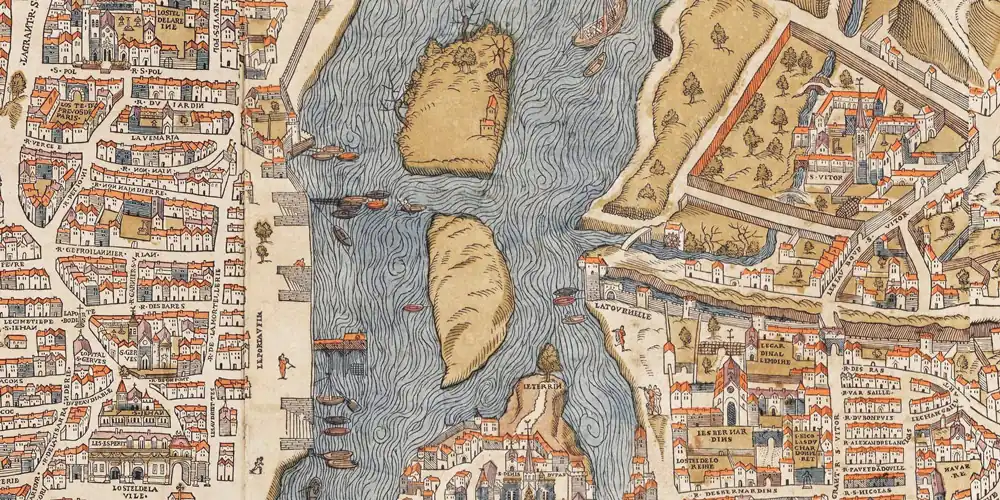 Île aux Vaches and Île Notre-Dame on a map from 1550; Île de la Cité is at the bottom
Île aux Vaches and Île Notre-Dame on a map from 1550; Île de la Cité is at the bottom
Before it became one of the most refined addresses in Paris, Île Saint-Louis had a much humbler role — as pastureland. Back when the city was still finding its feet, the island was actually two smaller ones: Île aux Vaches (Island of Cows) and Île Notre-Dame. For centuries, this stretch of land was used mostly for grazing livestock and drying laundry. Nobody was dreaming of mansions and boulevards just yet.
That changed in the 17th century, when city planners saw potential in the peaceful spot and transformed it into a model residential neighborhood by combining the islands. Straight streets, unified architecture, and a handful of elegant hôtels particuliers gave the island its distinct look — one that remains virtually untouched today. Walk its length and you're following the same grid Parisians laid down 400 years ago, though thankfully without having to dodge any cows.
2. Brasserie de l'Île St-Louis
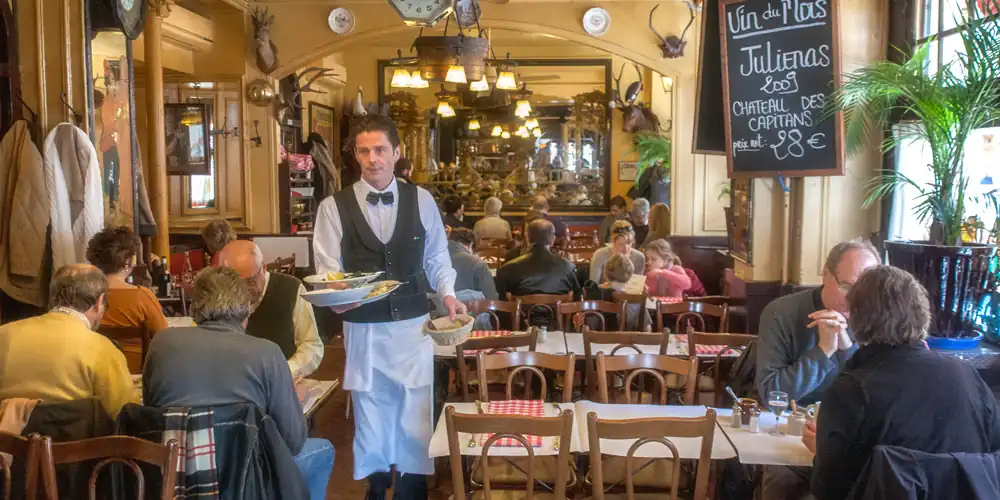 Lunch at Brasserie de l'Île Saint-Louis; March 19, 2012, 1:56 PM; photo by Mark Craft
Lunch at Brasserie de l'Île Saint-Louis; March 19, 2012, 1:56 PM; photo by Mark Craft
Behind Notre Dame is Le Pont St-Louis — the pedestrian bridge that connects Île de la Cité to Île St-Louis, Cross the bridge and the first building you come across is home to one of the best old-time brasseries in Paris, and our favorite spot for Sunday lunch.
Lunch here is the perfect Paris experience, especially in the colder months. Expect comfort foods like frisée salad with a warm poached egg and bacon; rich, oily herring with yellow, waxy potatoes; wine served in carafes; and plenty of frites, served by waiters who have been there for decades.
This is a prime example of classic Paris — the city of Hemingway and others before him. Enjoy it before it disappears.
![]()
|
Paris Dinner Cruises on the Seine Dine in style as you glide past the Eiffel Tower, Notre-Dame, and the Louvre on a magical Seine River cruise. Gourmet food, champagne, and Paris lit up at night – it’s unforgettable. |
|
Paris Dinner Cruises on the Seine Dine in style as you glide past the Eiffel Tower, Notre-Dame, and the Louvre on a magical Seine River cruise. Gourmet food, champagne, and Paris lit up at night – it’s unforgettable. |
3. Hôtel des Deux Îles – Simply Paris
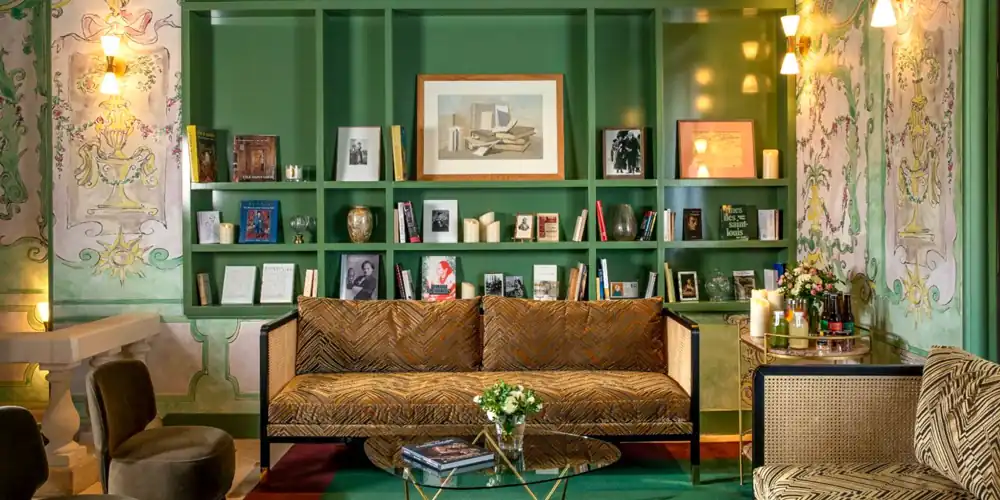 The lounge library at Hotel des Deux-Îles
The lounge library at Hotel des Deux-Îles
On a narrow lane of Île Saint-Louis, just far enough from the tourist buzz to feel like a retreat, Hôtel des Deux Îles makes a case for simplicity done well. Housed in a 17th-century townhouse, the hotel offers 17 compact but cozy rooms with exposed beams, soft lighting, and a sense that someone sensible designed the place with sleep in mind. It's charming without being precious — more Parisian neighbor than showroom.
But what really works here is the location. You're steps from the Seine, around the corner from Berthillon, and just across the bridge from Notre-Dame. Everything feels close, but never rushed. For travelers who prefer atmosphere over amenities and a bit of history underfoot, this little island stay is right on the mark.
4. Lafitte – A Temple of Foie Gras
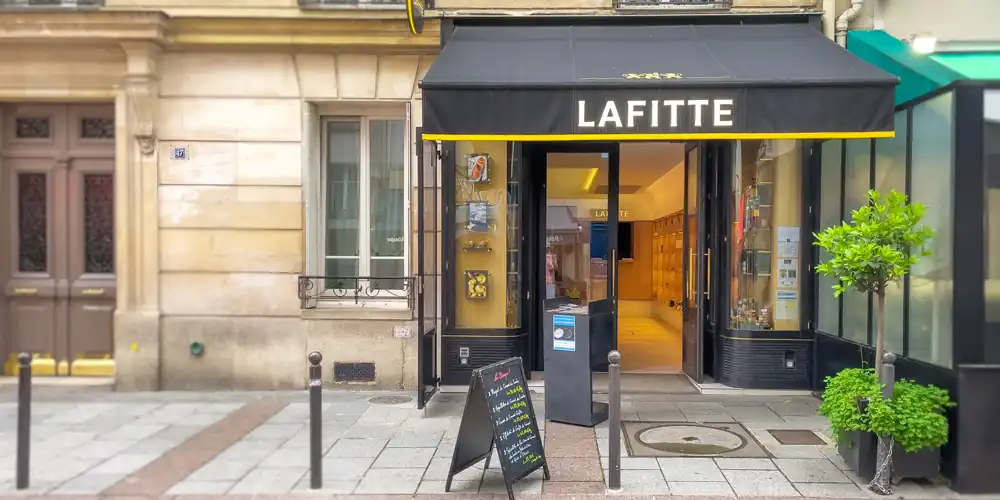
If you're the kind of traveler (like us) who navigates by taste, Lafitte on Île Saint-Louis is worth a detour. Specializing in duck and goose delicacies from the Landes region of southwest France, this boutique is a shrine to all things foie gras — along with confit, rillettes, and pâtés that practically beg to be smuggled home in a suitcase. The products are refined, rich, and unapologetically French.
Lafitte has been doing this since 1920, and they know their craft. Whether you're here to stock up for a picnic or browsing for edible souvenirs, the staff are happy to guide you toward the good stuff — which, to be honest, is most of what's in the shop.
- 8 Rue Jean du Bellay
- Île Saint-Louis
- Website…
Explore the Paris Islands
Explore the Paris Islands
5. Berthillon – Paris's Coolest Obsession
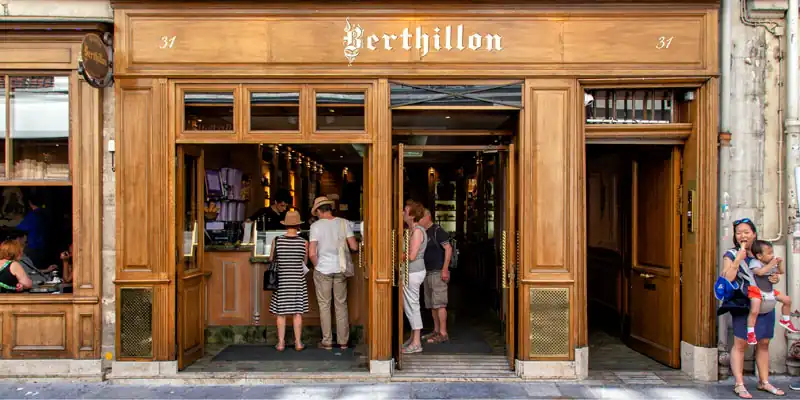 Berthillon, at Rue Saint-Louis en l'Île, photo by Mark Craft
Berthillon, at Rue Saint-Louis en l'Île, photo by Mark Craft
No visit to Île Saint-Louis is complete without a stop at Berthillon, the legendary ice cream house that's been converting skeptics into loyalists since 1954. Still family-run, still purist, still unapologetically closed on Mondays and Tuesdays, Berthillon has built a cult following around its impossibly smooth textures and pure, seasonal flavors — blackcurrant, wild strawberry, salted caramel, pear. You won't find mix-ins or gimmicks, just fruit, cream, and the kind of attention to detail usually reserved for wine.
You can head to the original shop on Rue Saint-Louis-en-l'Île, or grab a scoop from one of the nearby cafes proudly displaying the "Ici, Berthillon" sign in the window. Either way, it's worth the line. And no, you don't have to choose just one flavor.
6. Rue Saint-Louis en l'Île
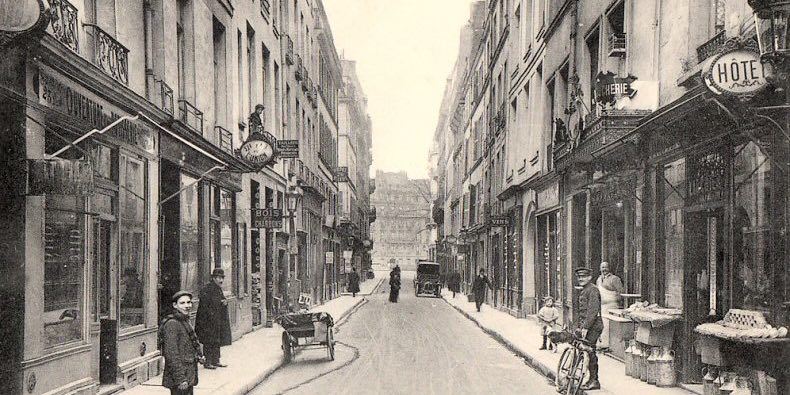 Rue Saint-Louis en l'Île in the early 20th century
Rue Saint-Louis en l'Île in the early 20th century
Stretching the length of Île Saint-Louis, Rue Saint-Louis en l'Île is less a grand boulevard and more a perfectly proportioned high street — quiet, self-contained, and steeped in character. Here, 17th-century façades line up neatly on either side of the cobblestones, housing everything from cheese shops and wine merchants to art galleries, chocolatiers, and antique dealers.
This street is where the island breathes: where locals pick up their bread, where the postman parks his bike, and where you may realize you might never want to leave. Walk it end to end and you pass one perfect window after another — some with lace curtains, others with golden pastries or handwritten signs for piano lessons. For a short street, it contains a surprising amount of Paris.
![]()
|
Trade Paris bustle for royal grandeur on a guided Versailles tour. Skip the lines, wander the gardens, and peek inside Marie Antoinette’s private estate. History never looked this good. |
|
Trade Paris bustle for royal grandeur on a guided Versailles tour. Skip the lines, wander the gardens, and peek inside Marie Antoinette’s private estate. History never looked this good. |
7. Hotel de Lutece – Culture & Serenity
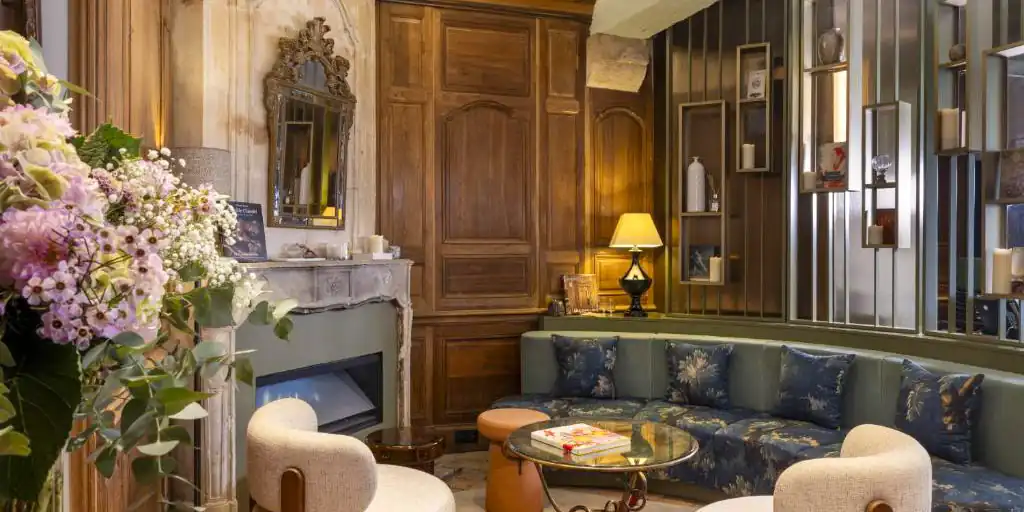 The lounge at Hotel de Lutece, on Rue Saint-Louis-en-l'Île
The lounge at Hotel de Lutece, on Rue Saint-Louis-en-l'Île
Along a narrow stretch of Île Saint-Louis, Hôtel de Lutece offers a kind of quiet comfort that only small Paris hotels achieve. Behind a leafy, slate-blue façade you'll find 23 rooms decorated in a classic Parisian style, with wood-beamed ceilings, warm lighting, and character reminding you that this building predates the French Revolution by quite a bit.
It's the location that does most of the talking. Step out the front door and you're seconds from the river, a few minutes from Notre-Dame, and mere footsteps from the nearest scoop of Berthillon. Whether you're wandering the quays or winding down with a glass of wine, this hotel gives you a rare blend of central and serene.
8. The Prettiest Walk in Paris
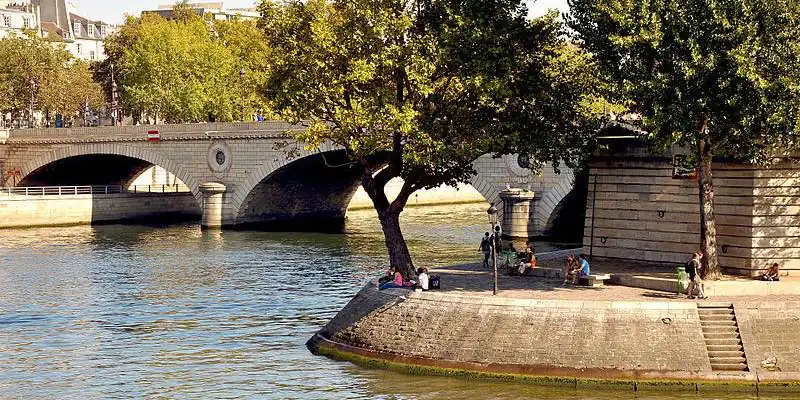 Place Louis Aragon on Île Saint-Louis, photo Wikimedia Commons by Moonik
Place Louis Aragon on Île Saint-Louis, photo Wikimedia Commons by Moonik
All you need for the perfect Île Saint-Louis stroll is a sense of direction and some unhurried time. Start at Pont Saint-Louis, the quiet pedestrian bridge from Île de la Cité, where someone is usually playing jazz guitar or covering Edith Piaf under the open sky. Step onto Île Saint-Louis and it all shifts — the pace, the sound, the space to breathe.
From there, step onto Rue Saint-Louis en l'Île, the island's elegant main street (and the title of an album by avant garde French singer, Brigitte Fontaine). First stop? Le Saint-Regis, where cafe tables spill onto the pavement offering fresh air, views, and plenty of people-watching. Amble slowly — admire the carved doors and shuttered windows, duck into a bookshop or boutique, and feel the city air with the Seine sparkling on either side.
Head east and you reach Square Barye, a leafy triangle at the island's tip named for the sculptor Antoine-Louis Barye. It's quiet, shaded, and feels like a secret, especially if you snag one of the stone benches under the trees. The statue of Theseus and the Minotaur in the center gives it a touch of classical drama, but mostly, it's a place to take a breath.
Loop back west along the quay, and you'll eventually stumble upon Place Louis Aragon, a tiny square dedicated to the French poet. There's not much to it — just a few concrete benches, a single lamppost, and some of the best views of the Seine you'll find anywhere. It's a favorite among locals and lovers alike. Sit for five minutes and you'll understand why.
![]()
|
From Paris to Provence, Burgundy to Bordeaux, find hotel deals with current sale prices. Save up to 20% in cities, villages, beach towns, and storybook countryside escapes. |
|
Discover today's sale prices on hotel rooms in every village & city in France. Save up to 20%. Find hotels in Paris, Burgundy, Provence, the Loire Valley, Normandy, and everywhere else! |
9. Architectural Elegance
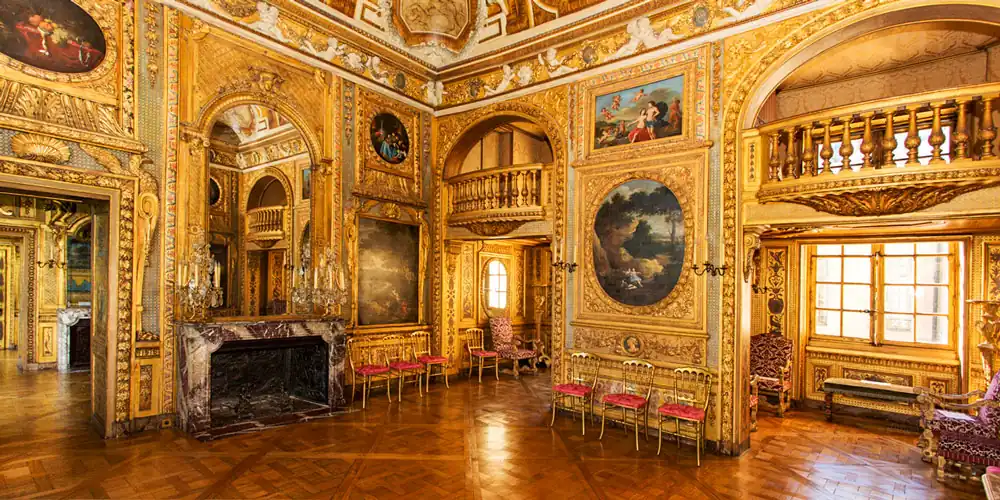 The golden-hued salon in Hotel Lauzun, photo Ville de Paris by Marc Verhille
The golden-hued salon in Hotel Lauzun, photo Ville de Paris by Marc Verhille
The first thing you notice on Paris Île Saint-Louis is how cohesive it looks. That's because it was planned as a complete neighborhood from scratch. Its hôtels particuliers with symmetrical facades, rounded window frames, and delicate balconies, make the whole island feel like urban planning from heaven.
A few standout mansions anchor this refined show. Hôtel Lambert, designed by Louis Le Vau, later hosted Polish royalty, Voltaire, and the Rothschild family. Its recent private restoration has preserved the graceful curves and elaborate interiors, even if it's now viewed from behind a high gate.
Nearby, Hôtel de Lauzun is open for occasional visits and exhibitions. Inside, the original 17th-century decor is still intact, right down to the gold-leaf ceilings and the salon where Baudelaire and Théophile Gautier once dabbled in hashish experiments.
Even lesser-known addresses impress. Hôtel Lefranc de Pompignan, on Rue Saint-Louis en l'Île, boasts one of the island's most elegant doorways. But it's not all grandeur on the island — a few buildings still carry signs of their merchant past, with worn shopfronts and curious iron hooks once used for trade signs.
![]()
|
Skip the famously long lines and head straight to the top of the Eiffel Tower. With a guide to lead the way, you'll be taking in the panoramic views while everyone else is still waiting below. |
|
Skip the famously long lines and head straight to the top of the Eiffel Tower. With a guide to lead the way, you'll be taking in the panoramic views while everyone else is still waiting below. |
10. Église Saint-Louis-en-l'Île
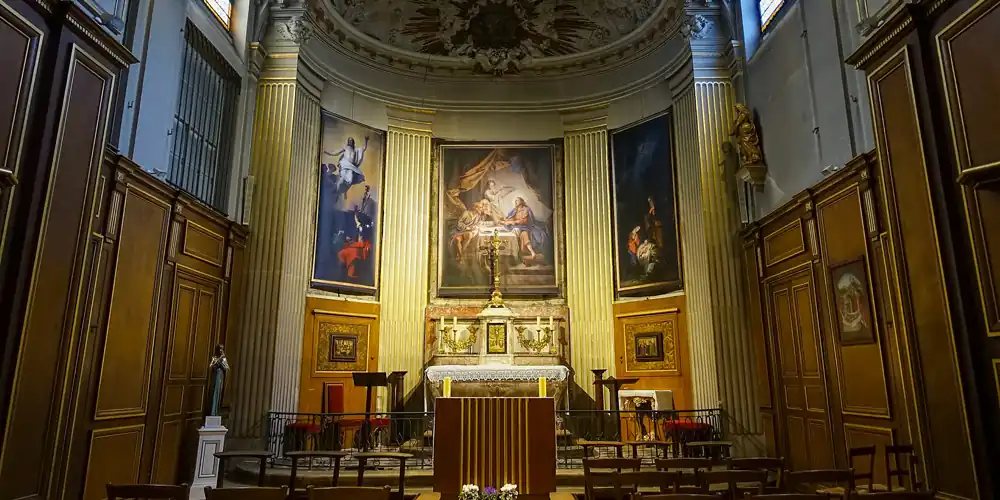 Interior of Église Saint-Louis-en-l'Île, photo Wikimedia by Guilhem Vellut
Interior of Église Saint-Louis-en-l'Île, photo Wikimedia by Guilhem Vellut
At the heart of the island stands Église Saint-Louis-en-l'Île, a baroque church that's easy to miss and impossible to forget. Step through the understated façade and you're in one of those quietly spectacular Paris churches that most visitors never find. Inside, creamy stone, gilded details, and a luminous baroque high altar create a soft, golden glow that feels miles away from the bustle across the river at Notre‑Dame.
If you're luck you may hear why this church has such a devoted following: its superb pipe organ. The instrument's rich, clear sound turns the nave into a natural concert hall, and the church regularly hosts intimate classical performances, especially in summer and around major holidays.The experience — sitting beneath the vaulted ceiling while the music spills down around you — feels like a secret shared between you and the island.
Outside, the church's distinctive clock tower is one of Île Saint‑Louis' most easily spotted landmarks. Pop in for a few minutes between scoops and strolls: even a short visit gives you a sense of the island's quieter, more contemplative side.
11. Bridges to the Mainland
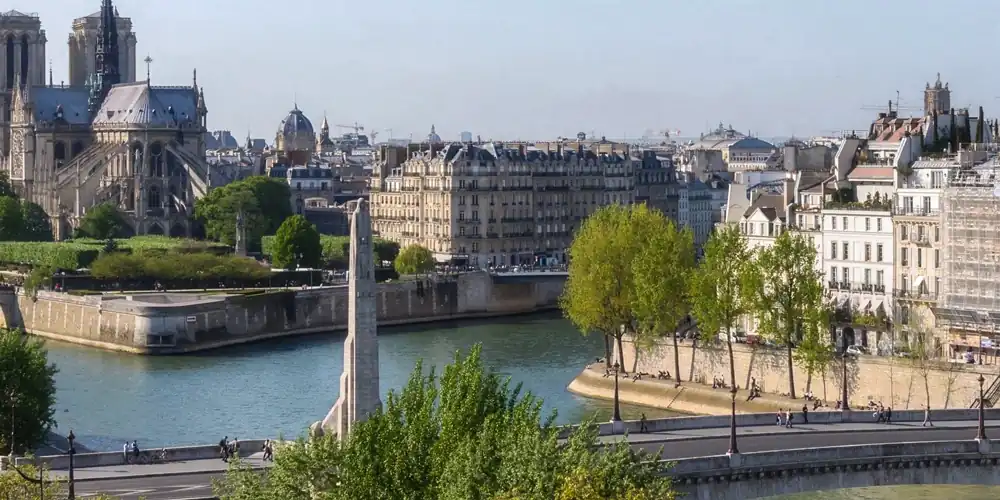 Notre Dame, statue of Geneviève, Pont Sully, and Île Saint-Louis, photo Hotel Saint-Louis en L'Îsle
Notre Dame, statue of Geneviève, Pont Sully, and Île Saint-Louis, photo Hotel Saint-Louis en L'Îsle
For such a small place, Île Saint-Louis is surprisingly well-connected. The Pont de la Tournelle, on the island's east end, is watched over by a towering statue of Sainte Geneviève — patron saint of Paris — who, the legend has it, saved Paris from Attila the Hun. She still gazes solemnly up river to ward off any future invaders.
To the south, Pont Marie, one of Paris' oldest bridges, dates back to 1635. Its central arch frames lovely views down the Seine, and according to legend, kissing beneath it guarantees eternal love (no pressure).
The western tip leads to Pont Louis-Philippe, often overlooked but very photogenic in the golden hour. Walk any of these bridges at dusk, when the buildings glow and the bells of Notre-Dame echo softly across the river.
12. Life On The Quays
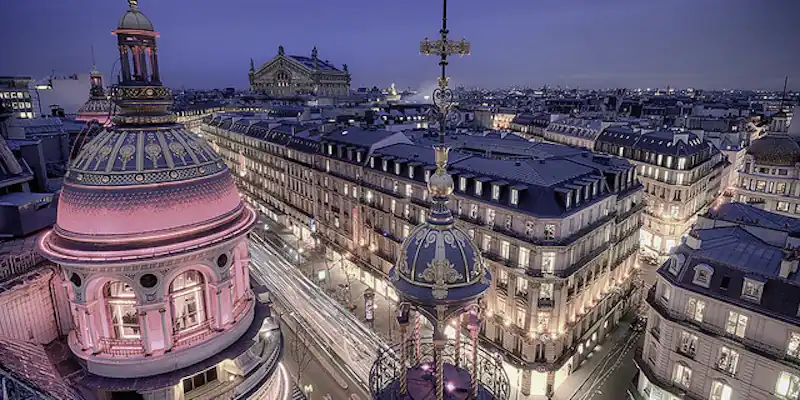 CAPTION
CAPTION
Part of the magic of Île Saint‑Louis lives down at water level, along the stone quays that wrap the island. Steps lead from street height down to Quai de Bourbon and its neighboring quays, where Parisians turn the riverbank into a living room: books open, food baskets appear, corks pop, and legs dangle over the Seine. It's informal, unpolished, and exactly how locals actually use the island on warm evenings
Bring a simple picnic — a baguette, cheese from a nearby fromagerie, a bottle from the corner shop — and claim a spot on the lower level for sunset. From here, the facades above you glow while boats slide past at eye level, and Notre‑Dame's towers pierce the horizon. It's not a formal "sight", but it may end up being one of your favorite memories of Île Saint‑Louis: no tickets, no lines, just Paris doing what it does best.
![]()
|
Browse our hand-picked Paris hotel deals with real-time discounts of up to 20%. Stay in the Marais, Saint Germain, the Latin Quarter, the Left Bank near the Eiffel Tower… every arrondissement is on the list. |
|
Browse our hand-picked Paris hotel deals with real-time discounts of up to 20%. Stay in the Marais, Saint Germain, the Latin Quarter, the Left Bank near the Eiffel Tower… every arrondissement is on the list. |
What Not to Miss on Île Saint-Louis Paris
A Short List for a Perfect Day
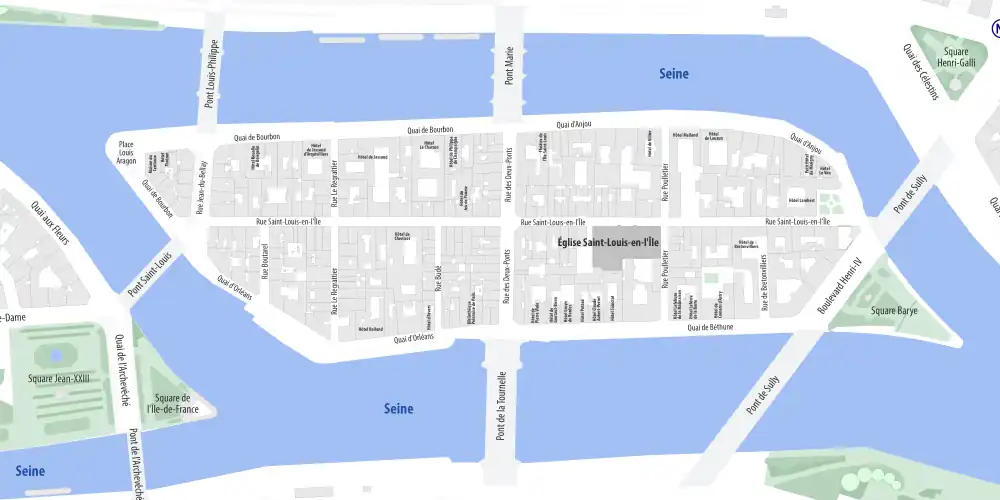 Street map of Île St Louis, photo Wikimedia by Paris 16 and OpenStreetMap
Street map of Île St Louis, photo Wikimedia by Paris 16 and OpenStreetMap
- Berthillon Ice Cream — Worth the line, worth the second scoop.
- Eglise Saint-Louis-en-l'Île — For the music and the hush.
- Square Barye — Tiny, shady, and perfect for a riverside breather.
- Hôtel Lambert — Gaze and dream from the outside.
- The Quays — Morning coffee strolls and sunset musings.
- Le Saint-Regis Restaurant — Where to sit, sip, and invent a Parisian alter-ego.
- La Brasserie de l'Isle Saint-Louis — Comfort food with Seine-side flair.
- Fancy doors and facades — Don't rush past them: marvel and admire.
- Pont Saint-Louis street performers — Stop, listen, tip a euro.
- A river's-eye view of Notre-Dame — Still the queen of the Seine.
Continue Your Paris Adventure
Ready to discover more fun & fulfilling Paris experiences? These are the most popular — for a good reason.
🎨 Skip-the-Line Louvre Masterpiece Tour →
🗼 VIP Tours of the Eiffel Tower →
🚢 Toast Paris on a Seine River Dinner Cruise →
👑 A Royal Day at Versailles →
⚜️ City of Paris Website: News & Happenings →
Île Saint-Louis FAQs
WHERE IS ÎLE SAINT-LOUIS IN PARIS AND HOW DO I GET THERE?
Île Saint-Louis sits in the Seine, just behind Notre-Dame Cathedral and Île de la Cité in central Paris. You can reach it on foot via Pont Saint-Louis from Île de la Cité or via bridges like Pont Marie and Pont de la Tournelle from the Right and Left Banks.
WHAT IS ÎLE SAINT-LOUIS KNOWN FOR?
The island is famous for its 17th-century stone mansions, quiet cobbled streets, riverside quays, and a village-like atmosphere. It is also home to Berthillon ice cream, intimate cafés, galleries, and the baroque church Saint-Louis-en-l'Île with its regular concerts.
HOW LONG SHOULD I PLAN TO SPEND ON ÎLE SAINT-LOUIS?
Allow at least one to two hours to stroll Rue Saint-Louis-en-l'Île, explore the quays, visit a café, and enjoy an ice cream or glass of wine. If you include a church concert, a longer riverside walk, or a leisurely meal, a half day on the island is ideal.
IS ÎLE SAINT-LOUIS A GOOD AREA TO STAY IN PARIS?
Yes. Île Saint-Louis offers a central yet peaceful base with boutique hotels, easy walking access to Notre-Dame, the Marais, and the Latin Quarter, plus classic river views. Rooms are often smaller and more intimate than in large hotels, but the atmosphere is uniquely Parisian.
![]()
|
Escape to the Land of Bubbly on a small-group day tour from Paris. Taste at top Champagne houses, meet boutique producers, enjoy a leisurely lunch, and toast to a perfectly sparkling day. |
|
Escape to the Land of Bubbly on a small-group day tour from Paris. Taste at top Champagne houses, meet boutique producers, enjoy a leisurely lunch, and toast to a perfectly sparkling day. |



